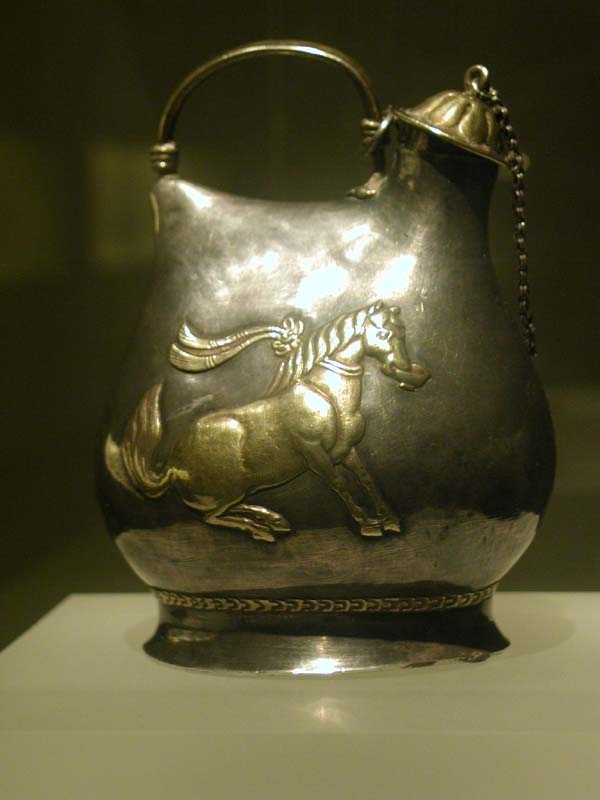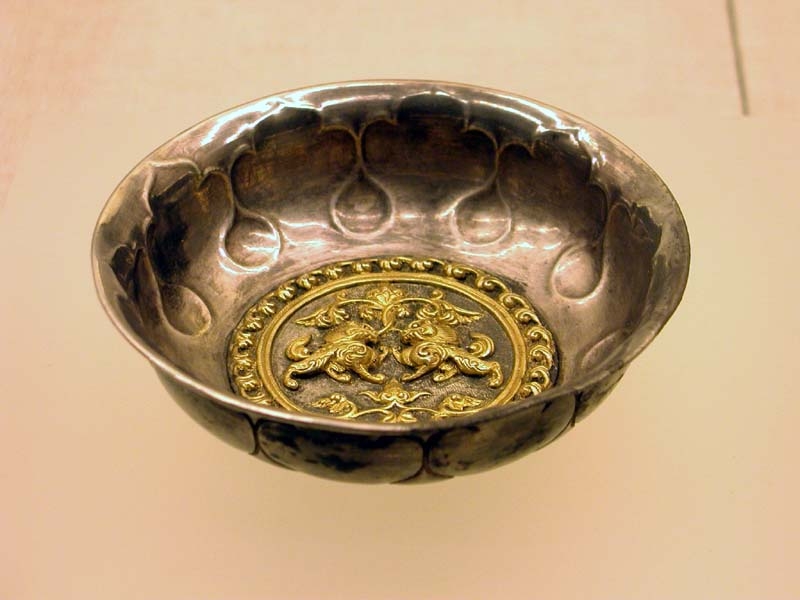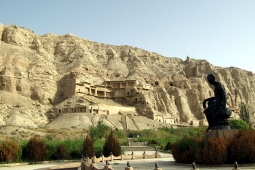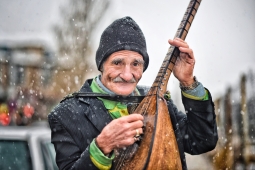Cultural Selection: Chinese, Sogdian, and other Central Asia influences reflected in the wares of the Hejia Village Hoard
Shaanxi History Museum, Xian, ChinaWares uncovered from archaeological sites along the Silk Roads can reveal much about the resulting elements of cross-cultural interactions and exchanges which occurred across the vast regions encompassed by the Silk Roads. Often these are evident in the forms, shapes, materials, and design motifs present on highly prized trade objects which have been uncovered at sites ranging from tombs, palaces, shipwrecks, and religious sites such as caves etc. As such, these objects can reveal much about the ways various cultures interacted with one another and the way a hybridised blending of different artistic elements was often one result of these interactions. An example of such a find, which has revealed much about the ways Chinese and Sogdian motifs and styles were combined on and within highly prized objects exchanged along the Silk Roads, is the Hejia Village hoard.
The Hejia Village hoard (a hidden stock or store of coins and/or other valuable objects) refers to a vast collection of over 1,000 wares which were stored in two large clay vases and one smaller silver vase sometime in the 8th century CE. These vases filled with precious items were buried in an unmarked site in Chang’an, near modern day Xian, an important city at the eastern terminus of the Silk Roads and the capital of the Tang Dynasty (618 - 907 CE). This hoard, one of the largest ever uncovered in China, was found in 1970 in Hejia village located just south of the city centre about 1 km from the former site of Chang’an’s Western Market. It is not known for certain where exactly these buried goods came from, nor who owned them. However, it is speculated that as these clay and silver vases uncovered at Hejia contained a number of highly valuable treasures they may have been stored by someone who was planning to return to them later, perhaps for safe keeping during a period of political strife or unrest. Despite these uncertainties there are a few clues which reveal something about the history of these objects. For example, interestingly a number of the highly decorative gold and silver bowls found in the hoard contained inscriptions or labels indicating the objects weight. This suggests that at one point in time they were held within an official storehouse where goods going in and out were closely monitored and thus were likely trade wares.
The three large pots contained over 1,000 different items including gold and silver artefacts, precious gems and minerals, medicines, and a vast coin collection. The find was one of the largest collections of buried treasures ever uncovered in China and one of the most beautiful collections of Silk Roads artefacts reflecting influences from China and various parts of Central Asia. Of the many vessels contained within the larger vases, 46 were silver medicine containers labelled with their weight and contents. Other purely decorative gold and silver vessels combined aesthetic elements from Chinese and Iranian art in ways similar to those seen on the surviving murals at Panjakent, a Sogdian city in what is today Tajikistan, which depict scenes from daily life along the trade routes. Additional imported wares from this find include gems, sapphires, rubies, topaz, and agate. Rubies and sapphires such as these often originated in what is today Myanmar, Sri Lanka, and India. Topaz often came from Myanmar and Sri Lanka, but also sometimes from Japan and parts of Russia. Another significant vessel in the find is a red-brown agate carnelian rhyton (a conical shaped container) drinking vessel which appears to have been made in Gandhara today in parts of Afghanistan and Pakistan.
In terms of their origin, only a very few of the vessels appear to be distinctly Sogdian in shape with the majority having a clear Chinese form. However, in their exterior design these vessels clearly blend stylistic elements from both cultures. For example, one gilt silver cup from the hoard has a number of clearly identifiable Sogdian features including eight lobes (divided into 8 exterior sections), a pearl border trim along its base, and a thumb ring attached to a triangular medallion with a deer on it. On the exterior panels of the cup a hunting scene, in the style and tradition of art from the Iranian Plateau, is depicted. Other panels show women in Chinese clothing playing musical instruments. Another important find from the hoard is a partly gilded silver vessel which also exemplifies Silk Roads interactions in its form, materials, and design. It closely resembles a leather water flask (although it is made of metal) in the style of those commonly owned by the peoples of the neighbouring steppe and carried whilst horse riding. It was made using gilt-silverware making skills and techniques which reached China via the steppe and Iranian Plateau and its exterior decoration depicts a horse, another Silk Roads import to China, which is wearing a ribbon in a stye reminiscent of that of Sasanian art.
Overall, the composition of the different goods found in the Hejia Village hoard, in terms of the higher percentage of locally made as opposed to imported items, reflects the general patterns of Silk Roads trade during the Tang period. Relatively few large items travelled overland along the Silk Roads and instead the items that did travel vast distances were generally small and easier to transport such as gems and precious stones. Over time, with increasing waves of migration along these routes, skilled craftsmen began to settle in cities in China, including Chang’an and with the arrival of Sogdian metalsmiths in China they began to make vessels similar, although not identical to, those made in their home regions. As these craftsmen became more and more familiar with the motifs and art of China, they adjusted to these new markets producing hybridised works of art which combined Chines styles and Sogdian motifs (and vice versa) as seen on the cups uncovered in the Hejia village hoard.
See Also

The Book of Fixed Stars and the Art of Astronavigation
Commencing around the 8th century CE, merchants from the Islamic world began to embark on expansive maritime trade across the Indian Ocean, linking the Arabian Peninsula, with East Africa, including the Island of Madagascar, the Indian Subcontinent and China.
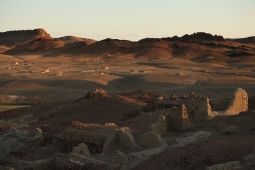
Cross-Cultural Elements Evident in a Steppe Headdress and Earrings
Throughout the history of the Silk Roads, the people occupying the steppe and mountainous regions of Central and East Asia have been known for their high mobility and crucial role in some of the most intense interactions and rich exchanges
